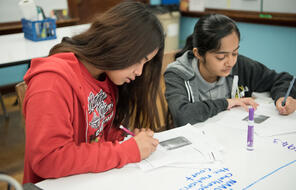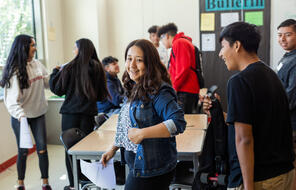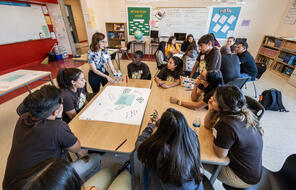
Big Paper: Building a Silent Conversation
At a Glance
Subject
- English & Language Arts
- History
- Social Studies
Grade
6–12Overview

Teaching Strategies
What Is the Big Paper Strategy?
This discussion strategy uses writing and silence as tools to help students explore a topic in depth. In a Big Paper discussion, students write out their responses to a stimulus, such as a quotation or historical document. This process slows down students’ thinking and gives them an opportunity to focus on the views of others. It also creates a visual record of students’ thoughts and questions that you can refer to later in a course. You can use this strategy both to engage students who are not as likely to participate in a verbal discussion and to help make sure that students who are eager to talk and listen carefully to the ideas of their classmates. After they participate in this activity several times, students’ comfort, confidence, and skill in using this method increases.

In a Big Paper activity, students respond silently to a text excerpt or image by writing their comments on a shared paper.
Procedure
How to Use the Big Paper Strategy
Variations
Remote Learning
Unlimited Access to Learning. More Added Every Month.
Facing History & Ourselves is designed for educators who want to help students explore identity, think critically, grow emotionally, act ethically, and participate in civic life. It’s hard work, so we’ve developed some go-to professional learning opportunities to help you along the way.
Exploring ELA Text Selection with Julia Torres
On-Demand

Working for Justice, Equity and Civic Agency in Our Schools: A Conversation with Clint Smith
On-Demand

Centering Student Voices to Build Community and Agency
On-Demand














